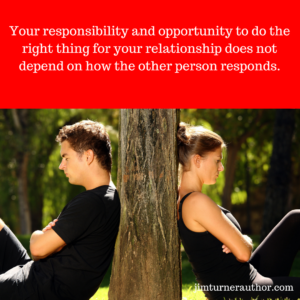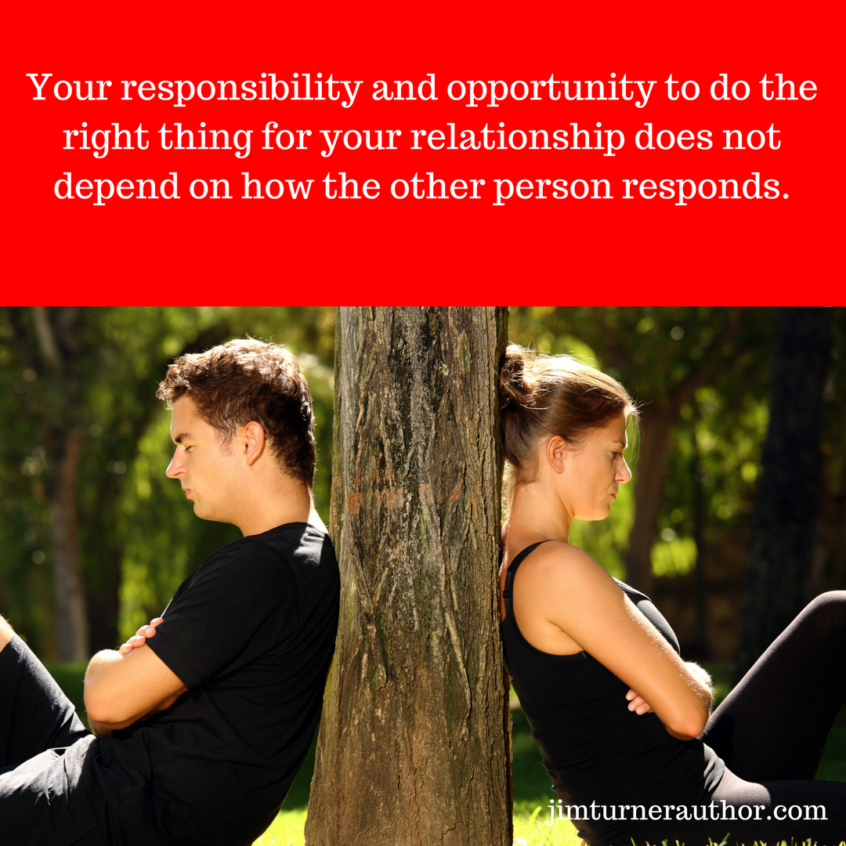Fear is paralyzing. Fear may be the single most limiting emotion we experience.
Think of all the things you could have done if it weren’t for being afraid. Think of everything that needs to be done now. Think of how you could be enjoying loving relationships if you had just said or done something earlier. How much are you postponing due to fear? What relationships have suffered over the years because we were afraid to make a move?
 A quick aside here. My experience as a disconnected man and with other disconnected men tells me that they will not understand this post. Fear doesn’t register with them. They are afraid of very little – except true connection – that’s a real fear, but they may not be aware of it within themselves. They don’t have any conscious reason to fear, especially concerning relationships, because to them, everything is great. It’s a special sort of blindness that keeps them from seeing the problems that others are painfully aware of. If you can read this and remember feeling fear concerning your relationships – you are probably not disconnected. Or, you have been disconnected and someone has delivered an ultimatum that has snapped you to attention with a little bit of fear. Back to the post.
A quick aside here. My experience as a disconnected man and with other disconnected men tells me that they will not understand this post. Fear doesn’t register with them. They are afraid of very little – except true connection – that’s a real fear, but they may not be aware of it within themselves. They don’t have any conscious reason to fear, especially concerning relationships, because to them, everything is great. It’s a special sort of blindness that keeps them from seeing the problems that others are painfully aware of. If you can read this and remember feeling fear concerning your relationships – you are probably not disconnected. Or, you have been disconnected and someone has delivered an ultimatum that has snapped you to attention with a little bit of fear. Back to the post.
What if you could overcome those fears and move forward? Simply asking that question can push fears right to the surface for some. ‘What if’ becomes a catalyst for fear. The fear of change, or a decision you should make, or a relationship issue is compounded by the fear of once again beating yourself up because you didn’t do anything about it. We become afraid of moving and afraid of standing still and afraid that we will criticize ourselves or be criticized by others regardless what we do. It’s a funnel cloud that keeps spinning and leaving destruction in its wake. What can be done?
The ideas below will help in almost every situation regardless your personality, position, problem, or peers. I will add one exception. If you have a clinical issue (diagnosed) with fear, then your approach may be much different. For most of us, though, the steps are effective if we will wrestle with the ‘what ifs’ and discipline ourselves to take them. So, let’s move past those ‘what ifs’ and get to the heart of overcoming fear.
Since we deal with relationships (I think everything is about relationships anyway) then the context is always about two or more people – not just you. And the fear you feel is most likely about the other person and how they will react if you suggest a change or lovingly confront them.
If you don’t remember anything else from this post, please remember this. Your responsibility and opportunity to do the right thing for your relationship does not depend on how the other person responds. Having an expectation of how the other person is going to respond can trigger you to act out of fear. Doing what is best in the sight of God and depending on Him for the outcome will deliver you from that fear.
[clickToTweet tweet=”YOUR responsibility to do the right thing for the relationship doesn’t depend on THEIR response” quote=”Your responsibility and opportunity to do the right thing for your relationship does not depend on how the other person responds.”]That being said, how do we do it? Here are the steps with one caution. Relationships are complex and one issue often gets tangled with many others. These steps are general and meant, for the most part, for single issues. Dealing with one thing often leads to dealing with ten. So be ready to take that into account.
Step One:
Identify the issue at hand or the feeling you are wrestling with. Write it clearly. Spend whatever time it takes to be exact so that a fifth grader could read, and understand it. Include a short mention of what you are afraid of in the description.
Examples:
• I don’t feel loved but if I tell him, he’ll just get angry
• Something changed, but I don’t know what it is, and I’m afraid to bring it up
• I’m being pressured to work late a lot and my family is suffering
• He thinks everything is fine and I need to tell him it’s not
These sentences are short and simple. They define exactly what the issues are and include a glimpse into what you are afraid of. Some issues may require more description and a list of fears, but try to keep it simple. When a source of fear is isolated, it is easier to overcome. Dragging the description out too far can muddle the real issue and leave you without any clear way to approach it.
Once you have an exact statement of the issue and your fear, you can start to tackle it. Step two is to explore your fear in a little more depth. Work hard at being honest with the situation. This is ‘worst case scenario’.
Step Two: Explore the Fear
What consequences do I fear? List them. Here you will list every possible negative consequence of making this change or decision. He’ll blow up, my wife will just shut down, I will have to give up my personal time, I’ll get ‘the lecture’, we’ll lose income, I will miss my tennis night, people will hear we’re having trouble, the kids will suspect something, she will have one of her meltdowns, my coffee will get cold. Think of everything and write it down!
Whose displeasure do I fear? Name them. Really – write their names down and imagine what their displeasure looks like. Make a movie in your mind of their face, their body language, what they might say, and what they might do. Write a movie title for what you just pictured.
What comforts do I enjoy now? List them. In other words – what comfortable thing do I risk if I attempt to do the thing I fear? Things like, my personal space, my evenings, my reputation, my paycheck, my car, my routine, my sewing club, my relationship with my friends, and etc.
Now, the big question:
Is there anything in the lists above that make this issue an absolute no go? If so, write an explanation as to why this thing can’t be overcome. (Remember – the other person’s response shouldn’t determine whether or not you do the right thing) If nothing, move to the next step.
The third step is to explore the positive results of making the change or decision, even the ones you think are unlikely. This is ‘best case scenario’.
Step Three: Explore the Benefits of Overcoming the Fear
What benefits do I crave? List them. Here you list every possible benefit of making the change/decision/confronting the issue. Our marriage will be better, he will hear me, I won’t have to keep it inside, my tennis game will rock, I will get some respect, we’ll have some resolution, we will both learn, I will be able to sleep again, and etc. Don’t skimp on this step. Work hard at imagining the best possible outcomes.
Who will benefit? Name them. Same as the negative points you did earlier only imagine these people are happy and enjoying the benefits of confronting this issue. Maybe you become the hero, or you get flowers, or at least a, ‘thank you’. If you make even a small advance, then all the better. When everyone around you is happier – your life will be better.
What comforts will I enjoy? List them. Yep, try the exact opposite of what you wrote above. What comforts will you enjoy as a result of this change/decision? More time to yourself, more money, more time off, better interaction, a cappuccino at 3 everyday, less friction, more attention, a relationship that works, whatever. Dream big.
Is there anything in the lists of benefits that make this change/decision/confrontation a must do? If so, write the reasons why. Build on those reasons and you stand a great chance of success for step four.
Step Four: Plan Your Next Moves
Now that you’ve exhaustively explored the potential consequences and benefits, you are ready to plan to face your fear with the facts. At this point you should be able to tell if this is a definite no go, or a must do, or something in-between. If it’s something in-between, my guess is that you weren’t actually as afraid of it as you thought. Fear doesn’t usually give you middle-of-the-road options. If you can take it or leave it, then it’s not a compelling change or decision and really doesn’t fit these steps.
Next week we will talk about Planning to Overcome Fear. We’ll have a few suggestions on how you can make a plan that addresses your fears. We’ll address how to use what you’ve discovered about your fears and how to use those discoveries to fight those fears. Until then just one more thought.
I’m well aware that avoiding the whole issue is an option here. Before you take that option, go back to step two and run the likely results of avoidance through the steps and see if you still think avoiding it is the best option. If you choose not to address the issue, you’ve made a choice. Make sure it’s the best choice.
You can overcome your fears. You just need a little push from your self-determined side and a little time to think. I think you’ll soon be forgetting about the ‘what ifs’ and moving on to the ‘why wait’!


